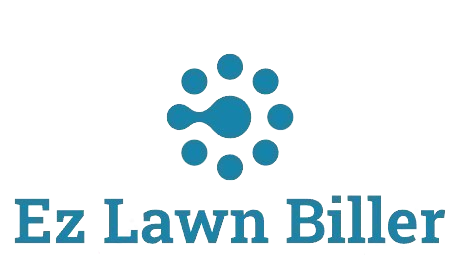Lawn care businesses are constantly searching for ways to improve their performance and provide better services. This comprehensive guide will help you analyze your lawn service performance to boost efficiency and client satisfaction.
The Ultimate Guide to Analyze Performance for Lawn Services
In today’s competitive lawn care industry, understanding how to analyze performance effectively can be the key to sustained success. This guide delves into critical aspects of performance analysis tailored for lawn service providers, offering insights on metrics to track, tools to use, and strategies for improvement. We will cover everything from customer satisfaction metrics to financial performance and operational efficiency, providing you with actionable tips that can enhance your lawn care business.
Performance analysis is crucial because it allows you to identify strengths and weaknesses within your business. By examining how well you’re meeting client expectations, managing resources, and operating financially, you can make informed decisions that propel your lawn service forward. This guide will walk you through the steps necessary for a comprehensive performance analysis, emphasizing the importance of data-driven decision-making.
We’ll explore various dimensions of performance, including service quality, operational efficiency, and financial health. Moreover, we’ll introduce tools like Lawn Biller Software, which can significantly streamline your analysis process.
Understanding Key Performance Indicators (KPIs)
The first step in analyzing performance is establishing relevant Key Performance Indicators (KPIs). These are measurable values that demonstrate how effectively your business is achieving key objectives. For lawn care services, common KPIs might include customer retention rates, average job completion time, and revenue per customer.
For example, tracking customer retention rates can reveal insights about client satisfaction and the quality of service you provide. A high retention rate typically indicates that customers are satisfied and trust your lawn care services, while a low rate might signal underlying issues that need to be addressed.
Additionally, average job completion time can help you assess operational efficiency. If your team consistently takes longer than expected to complete jobs, it might be time to evaluate your processes and identify potential bottlenecks. These metrics not only help in evaluating performance but also guide strategic planning.
Utilizing Customer Feedback
Another vital component of performance analysis is gathering and analyzing customer feedback. In the lawn care industry, client satisfaction is paramount. Regularly soliciting feedback through surveys or reviews can provide valuable insights into how your services are perceived.
For instance, you might conduct post-service surveys that ask clients to rate their satisfaction on a scale from one to ten. Analyzing these responses will allow you to pinpoint areas that require improvement, such as communication, service quality, or punctuality.
Furthermore, leveraging tools like Lawn Biller Software can enhance your ability to track and analyze feedback effectively. This software can automate the feedback collection process, making it easier to gather and respond to client concerns.
Analyzing Financial Performance
Financial performance analysis is crucial for any lawn care business. Understanding your expenses, revenues, and profit margins will allow you to gauge the overall health of your business. Key metrics to track include total revenue, operating costs, and profit margins.
For instance, if you notice that your operating costs are increasing but revenue remains stagnant, it may indicate inefficiencies in your operations or pricing strategies that need reevaluation. Additionally, analyzing profit margins for different services can help you identify which services are most profitable and which may need to be adjusted or eliminated.
Utilizing accounting software or tools like Lawn Biller Software can streamline this process, allowing you to generate financial reports quickly and accurately. These insights are invaluable for making data-driven decisions and ensuring your lawn care business remains profitable.
Operational Efficiency and Resource Management
Operational efficiency is another vital aspect of performance analysis. This refers to how effectively your business utilizes its resources, including labor, equipment, and time. Tracking metrics like labor productivity, equipment utilization rates, and service response times can provide clarity on your operational performance.
For example, if your equipment is frequently underutilized, it may be worth considering whether you’re over-invested in machinery or if there are opportunities to expand your service offerings. Additionally, if your team’s service response time is longer than industry standards, it may indicate a need for better scheduling or resource allocation.
Implementing a system for tracking these metrics can significantly enhance your operational efficiency. Tools like Lawn Biller Software can assist in managing schedules and resources, allowing you to focus on improving service delivery.
Benchmarking Against Industry Standards
Benchmarking involves comparing your performance metrics against industry standards or competitors. This process helps you understand where your business stands within the market and can highlight areas for improvement. Research industry reports, attend conferences, or engage with professional organizations to gather relevant performance benchmarks.
For instance, if the average customer retention rate in your area is significantly higher than yours, this discrepancy may warrant further investigation into your customer service practices. By setting performance goals based on these benchmarks, you create a roadmap for improvement.
Moreover, maintaining awareness of industry trends can help you stay competitive. Adopting innovations or best practices observed in high-performing lawn care businesses can lead to significant improvements in your own operations.
Implementing Continuous Improvement Strategies
Once you’ve gathered and analyzed your performance data, the next step is implementing continuous improvement strategies. This can involve refining your service offerings, enhancing customer interactions, or optimizing operational processes.
For example, consider adopting a customer relationship management (CRM) system to streamline client interactions. A CRM allows you to manage client information effectively, track service histories, and follow up on feedback, ensuring a more personalized experience.
Additionally, regularly revisiting your KPIs and adjusting them as needed can help you maintain a focus on the most relevant performance areas. Continuous improvement should be ingrained in your company culture, encouraging your team to strive for excellence consistently.
Leveraging Technology for Enhanced Analysis
In today’s digital age, leveraging technology for performance analysis is essential. Many software solutions offer robust features that can help lawn care businesses streamline their operations and improve performance metrics. Tools like Lawn Biller Software not only simplify billing but also provide powerful reporting features to track and analyze performance.
For instance, data analytics tools can help visualize trends over time, making it easier to identify patterns in customer behavior or operational efficiencies. Investing in such technology can save time and increase accuracy, allowing you to focus more on strategic analysis rather than manual tracking.
Furthermore, cloud-based solutions offer mobility and flexibility, enabling you to access performance data from anywhere. This accessibility is crucial for making timely decisions when managing your lawn care business.
Case Study: Performance Analysis in Action
To illustrate the importance of performance analysis, consider a lawn care company that recently implemented a new KPI tracking system. By focusing on customer retention rates and service quality metrics, they identified several factors contributing to client dissatisfaction.
They discovered that response times to client queries were slower than industry standards, resulting in lost business opportunities. By investing in a CRM system and training staff on effective communication, they improved their responsiveness and ultimately increased customer retention by 15% over six months.
This case demonstrates how performance analysis can lead to actionable insights that drive positive change. It emphasizes the importance of continuously monitoring and refining strategies based on performance data.
Conclusion
In summary, analyzing performance in lawn services is a multifaceted process that is essential for growth and success. By establishing key performance indicators, gathering customer feedback, assessing financial performance, and optimizing operational efficiency, you can identify areas for improvement that will enhance your business.
The significance of understanding your performance metrics cannot be overstated; it empowers you to make informed decisions that can lead to increased client satisfaction and profitability. As the lawn care industry continues to evolve, staying ahead requires a commitment to continuous improvement and the effective use of technology.
As you embark on your performance analysis journey, consider utilizing tools like Lawn Biller Software to streamline your efforts. With the right strategies in place, your lawn service can thrive in a competitive market. Start analyzing your performance today and watch your business flourish!




